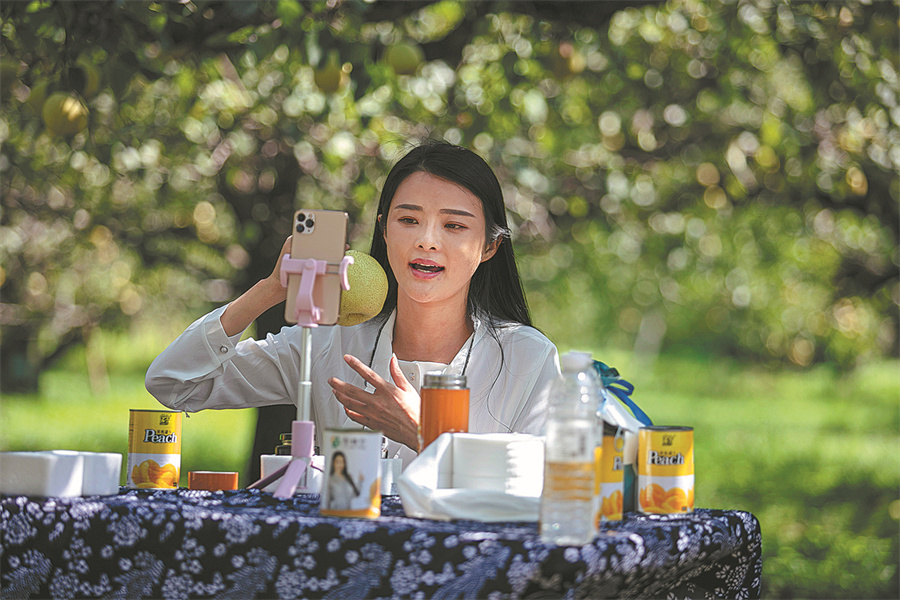Pears, peaches offer taste of the future

An anchor introduces Dangshan pear products as part of a livestreamed event held in the county last year. [Photo by Li Li/for China Daily]
On the right track
In 2019, Dangshan was removed from the national list of key counties slated for poverty alleviation as a result of generally successful efforts across the area.
"Being removed from the list doesn't mean that every poverty-stricken household has been lifted out of poverty," Zhang said.
He added that members of his administration continue to offer assistance to the county's vitalization efforts.
"To put Lintun on the right track for steady development, many things have to be accomplished," he said. He noted that industrialization is one of the key elements.
In 2017, Duan and other investors founded Anhui Liduobao Biotechnology. The company mainly focuses on producing pear syrup, a thick liquid containing protocatechuic acid, which is believed to be effective in relieving coughs.
The startup sells the pear syrup as a final product of the processing procedure and also uses it to produce popular items such as candy.
Duan said a trial run was successful, so she rented more land to enlarge the orchard. In 2019, Zhang Ying, the deputy county mayor appointed by the NMPA, helped connect Anhui Liduobao with a pharmaceutical company from Shandong province, Anhui's northern neighbor.
Anhui Liduobao provides pear syrup to the company as raw material for a popular traditional Chinese medicine that is sold by pharmacies.
It takes about 11 kg of fresh pears to make 1 kg of pear syrup as a packaged final product, priced at more than 100 yuan. If the fruit were sold to an intermediary, it would only fetch 11 yuan, according to Duan's calculations.
Last year, the company processed about 34,000 tons of pears, but its cultivation base only produced 7,000 tons.
The other 27,000 tons were purchased from local farmers, with half coming from previously poverty-stricken households.
























